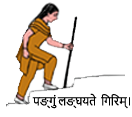A drug is called Oshadhi in Sanskrit (Osh means prepared by boiling and/or roasting), which means medicinal herb. A drug is usually prepared using one or another process. Some medications are prepared from herbs, some from germs and animals. In contrast, some are manufactured in factories by chemical or biotechnical processes. Modes of drug administration vary – some are applied to the skin, and some are orally administered. Injections of drugs can be intradermal (in the skin), subcutaneous (under the skin), or intravenous (in a superficial vein). Some medications are inhaled through the nose or mouth (sprays/inhalers). Other routes can be used for the administration of some agents.
Oral medications are usually safe, simple, and cheap though they may not be wholly absorbed in the stomach or intestines. An absorbed drug is transported to the liver, processed, and transformed into an active compound. Some medications can act without any processing in the liver. An active drug then circulates throughout our body. Though many drugs work at a particular organ, they do affect the entire body. A few medications can gradually accumulate in body fat or the organs such as the liver. A single dose of the drug remains active in the body for a few hours (Biological half-life) and is then excreted through urine or stools.
When a drug is injected, the entire dose enters directly into circulating blood. As a result, it is not affected by digestive secretions in the bowel, and effects are quicker. In addition, an injected drug usually does not lead to hyperacidity or other digestive disturbances.
Duration of drug activity in the body can be increased with technological modifications in drug delivery. Such controlled release drugs (usually in the form of a capsule) alleviate the need for multiple daily doses.
The dose of a drug depends on many factors, such as the type and severity of the disease and the patient's age and weight. The efficacy of few drugs such as methotrexate depends on hereditary factors too. Concomitant use of other medications is also important as there can be interactions amongst them. Prolonged administration of certain drugs may necessitate an increase in dosage in the future. Some drugs, such as opium-derivatives (used as pain killers and cough suppressants), can lead to addiction.
